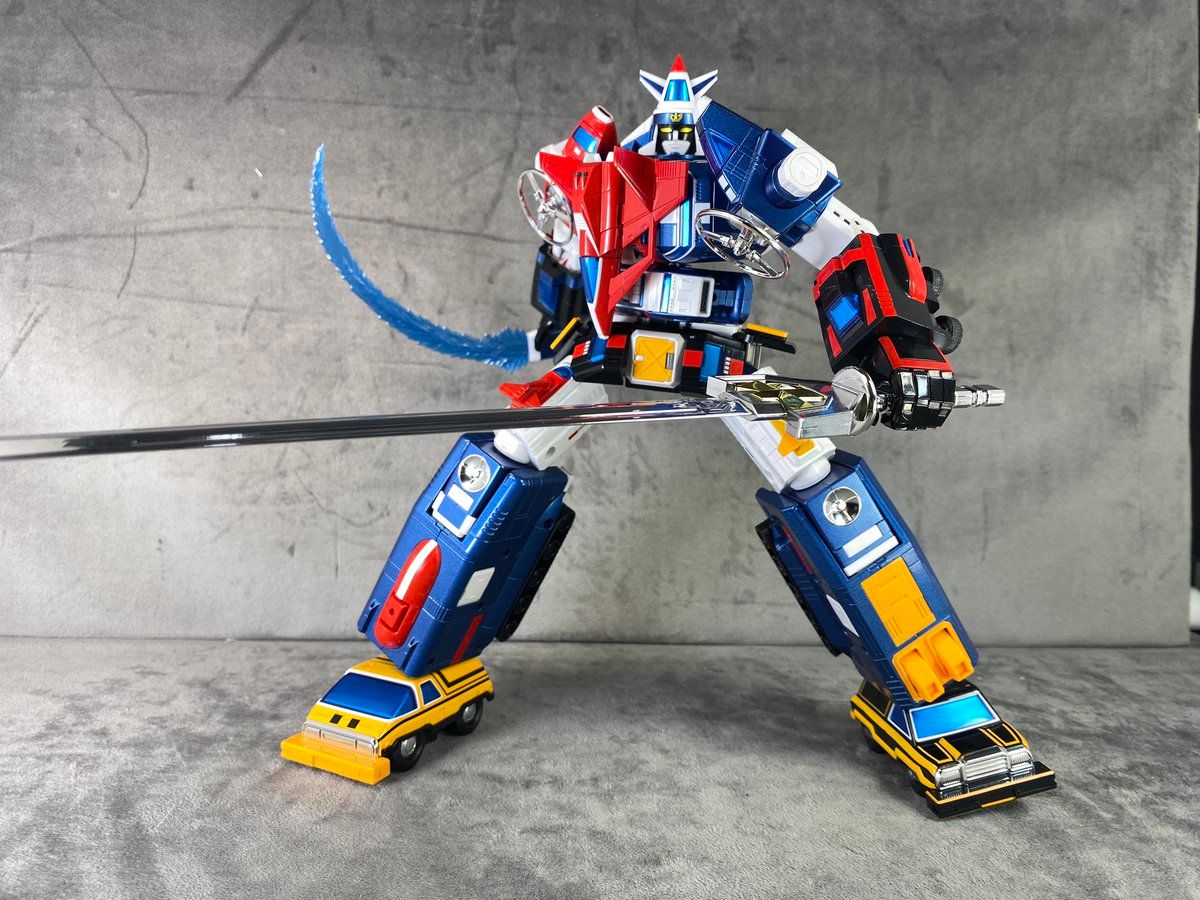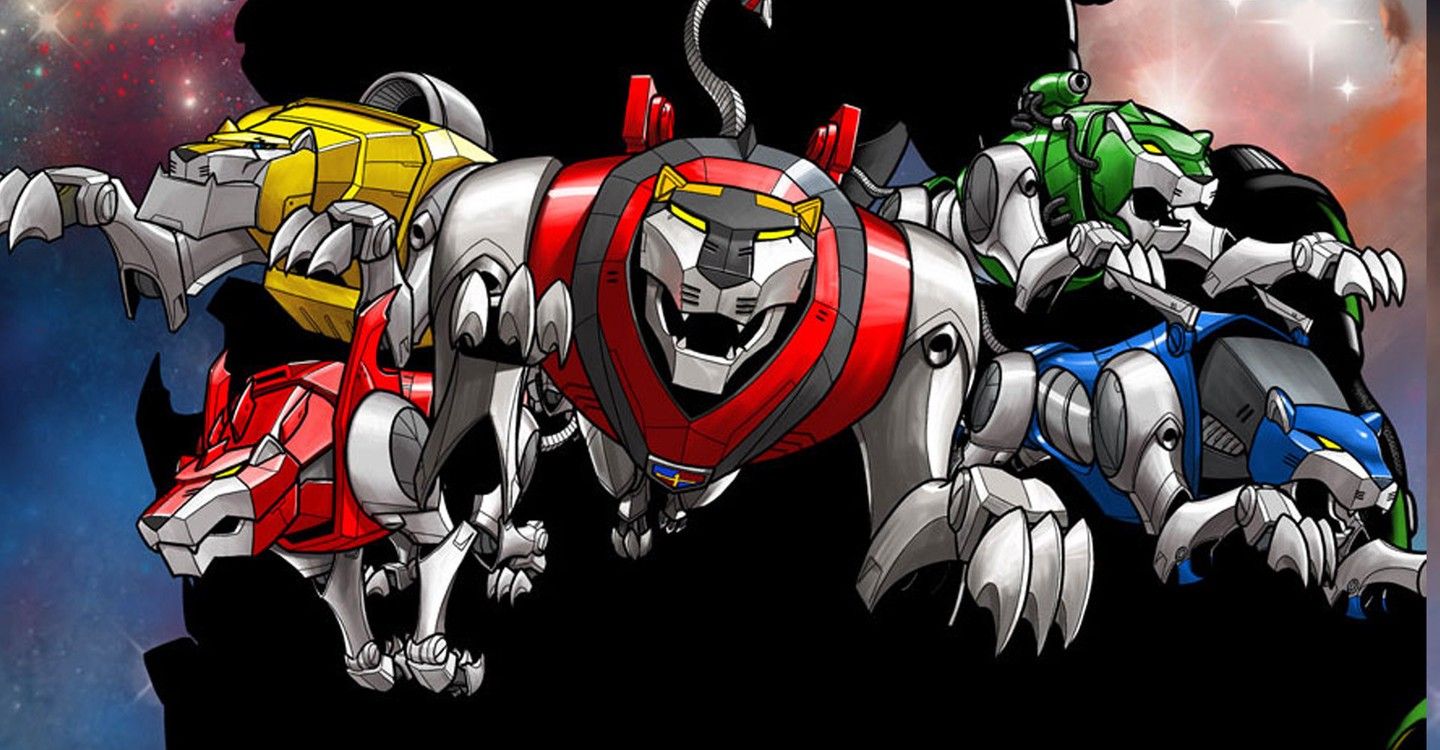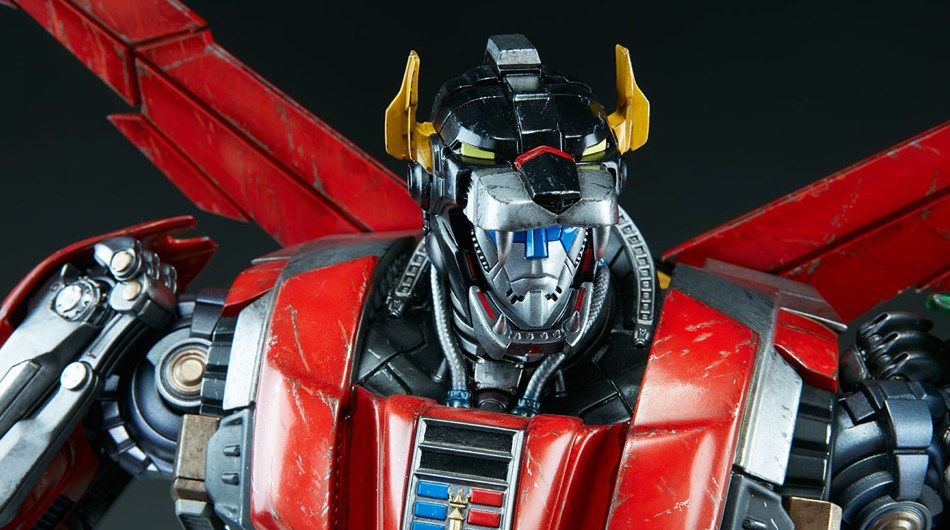There was a significant chunk of time in which the predominant method of distributing anime in North America was not to create a genuine translation of the original Japanese work but rather to use the existing Japanese work as material with a which to craft an entirely, or at least mostly, new show on the cheap. Voltron is a product of that primitive time. Though it’s not as unwieldy a chimera as Robotech, a combination of three unrelated anime series (Super Dimension Fortress Macross, Genesis Climber Mospeada, and Super Dimension Cavalry Southern Cross) mashed together like an animation Frankenstein. Voltron consists of but two shows, Beast King GoLion and Armored Fleet Dairugger XV. GoLion forms the first half of the series, known as Lion Force Voltron or Voltron of the Far Universe. As I’m sure you could have guessed GoLion is the source of the iconic robot lions and their equally iconic combined mecha form. Dairugger is the basis for the less well regarded and remembered second half of the series, Vehicle Team Voltron or Voltron of the Near Universe.

Dairugger provides us with the oft and perhaps unfairly derided “Vehicle Voltron”. The second Voltron was not a success. Relaunching the series with completely new characters in a completely new situation in a completely new setting was alienating to fans and the planes, cars, and boats that make up vehicle Voltron were a lot less exciting than the lions of the original run. The poor reaction to the second Voltron resulted in the canceling of plans for a third Voltron. This one would have been adapted from the series, Lightspeed Electroid Albegas. While the show never came to be, toys of this third Voltron, known as Gladiator Voltron, were released and marketed. After Vehicle Voltron failed to capture imagination in the same way as its feline predecessor the Voltron franchise was put on ice for about a decade but nothing as intensely toyetic as Voltron can ever truly die.
The series returned in polygonal form with a CGI animated series in the late nineties called Voltron: The Third Dimension. I have incredibly hazy memories of watching this series as a kid and it does not seem to be too well remembered or loved. Looking at it now it seems the CGI is on the low end even for the nineties. Reboot it is not. Though I’m sure someone out there has a special place in their heart for it right next to Roughnecks: Starship Troopers Chronicles and Cubix: Robots for Everyone.

Then after another decade of hibernation came Voltron Force, a partial return to the second dimension that combined 2D animation with 3D robots. Voltron Force has more defenders than its chunky predecessor but has been largely overshadowed by the current series, Voltron: Legendary Defender. Legendary Defender has had three seasons so far, both released on Netflix (the fourth season is set to drop on October 13th), and let me tell you it is, objectively and quantifiably, really good. Its showrunners, Lauren Montgomery and Joaquim Dos Santos both worked on Legend of Korra and Avatar: The Last Airbender and you can really tell. Like those series, it strives for a crowd-pleasing mix of humor, action, and drama with a focus on strong characterization and exciting, fluid fight choreography. Like all the best reboots of nostalgia properties, it doesn’t seek to recreate the original but to bring into reality the idealized version of the original that exists only in the minds of fans so that it can be enjoyed by both new and old viewers.
The first thing that one might call a Voltron toy actually hit US shores about a year before Voltron was even conceived. In 1983 Bandai America released a Golion figure as part of their Godaikin line. Godaikin was Bandai’s attempt to take figures from the Chogokin line of diecast robots and sell them in America. It was not a huge success. The figures were impressive but expensive and lacked the multimedia marketing campaign of competing lines like The Transformers.
The first actual Voltron toys were handled by Matchbox. Like the Godaikin figure, these were die-cast figures but that Golion figure was merely a single figure of the combined robot form. These Matchbox figures actually made good on the series’ central gimmick and allowed you to combine and separate the individual pieces of the various Voltrons. Matchbox produced combing figures for all three Voltrons, even the Gladiator. The Matchbox line fizzled, possibly because of a lead paint related recall, and the license passed to Panosh Place. Panosh switched to plastic and upped the scale. The lions they produced actually had room for pilots that were, of course, sold separately. Panosh’s tactic seemed to be all about taking cues from Masters of the Universe. They produced accessory laden figures of both the heroes and the villains as well as a castle playset and a coffin for the Robeast baddies that would not look out of place on the cover of your next metal album.
In 2012 Mattel began releasing Voltron figures through their subscription service, Matty Collector. They were released monthly in packs containing a lion and a pilot from February until October of that year. The Mattel figures are sort of an amped up, high quality takes on the Panosh figures. They’re all plastic and include pilots that can be placed inside the lions. When combined they create a massive 23’’ robot. I believe this is still the largest Voltron you can find.
The current holder of the license is Playmates who are producing figures for Legendary Defender. So far they’ve released two different takes on the lions. The Legendary series is kind of a halfway point between the philosophies of the Panosh and the Matchbox lions. They are plastic and on the large end but they lack cockpits. The Metal Defender Lions are smaller die-cast figures more in line with the early Matchbox lions. Playmates has released figures of the pilots, or rather paladins, but you’re not going to have much luck if you try to shove them into their rides.

